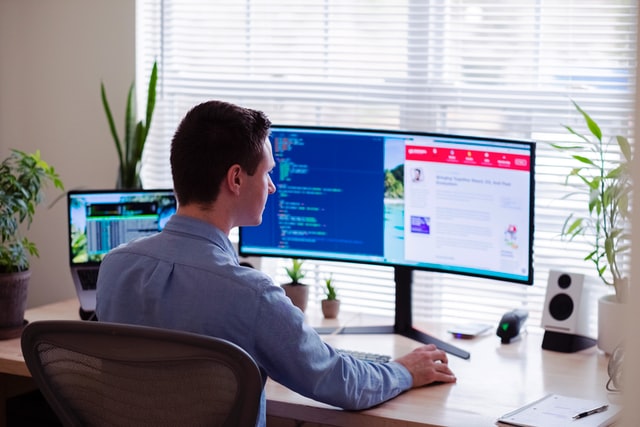In 2021, Google is introducing a new Core Web Vitals algorithm. It analyzes website loading speed, compliance with security policy, quality of resource pages. Let’s figure out how the new parameter works and what work needs to be done so that the site does not fall in the search results.
What signals does the Core Web Vitals measure?
Largest contentful paint (LCP) – page loading speed. This parameter checks the amount of time it takes to render a video, picture, article, or other largest element. The desktop and mobile versions of the site are taken into account.
Cumulative layout shift (CLS) – time taken to stabilize. Sometimes, when loading a page, there are situations when the user clicks the desired button, but ends up in a completely different area, because the page layout is shifted at that moment. After a while, the page will stabilize.
First input delay (FID) – first input delay. Shows the speed of processing and issuing the result when the user clicks a button or other action.
Impact on rating
Google evaluates a site by hundreds of ranking factors and it is impossible to say that anyone specific signal can drag a resource to the bottom. But a completely frivolous attitude towards Core Web Vitals can significantly affect the ranking: the search engine researched that visitors are 25% more likely to stay on the site if it meets the thresholds of the new factor. Therefore, the resource must meet at least the minimum requirements in order not to lose its position.
Core Web Vitals will impact your site’s SEO across all devices and will also become the primary criteria for your Top Stories pages to appear. Eligibility is also required for inclusion in Google News.
What to do to meet Core Web Vitals thresholds
Search Console has a new Core Web Vitals report. It includes a list of all indexed URLs that are marked as “poor, good, needs improvement”. If you don’t have access to Search Console, you can use the free Google Speed Checker.
Each metric has methods that help to correct the indicators, the main thing is to figure it out. what exactly affects the website loading speed:
Compression of resources.
Correction of errors in page layout, problems in rendering.
Server-Side Rendering Implementation
Until 2021, there is still time to independently study a new factor and fix problems that may affect the resource loading speed. If you don’t have time or desire to figure it out, call us. We will conduct an audit, identify negative factors, and fix the site loading problem.









